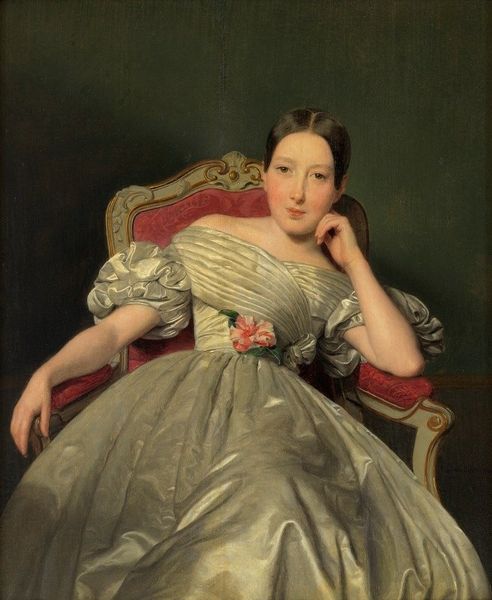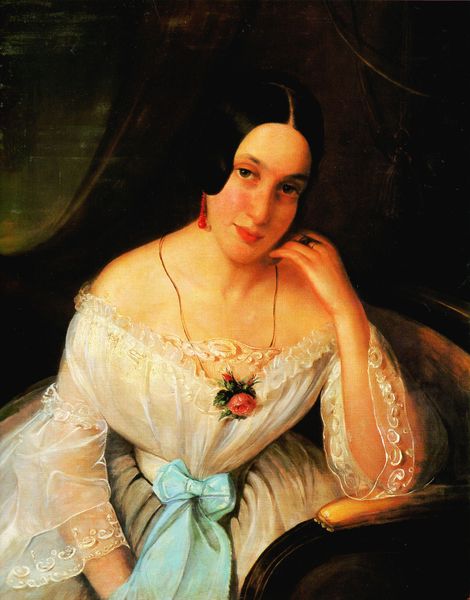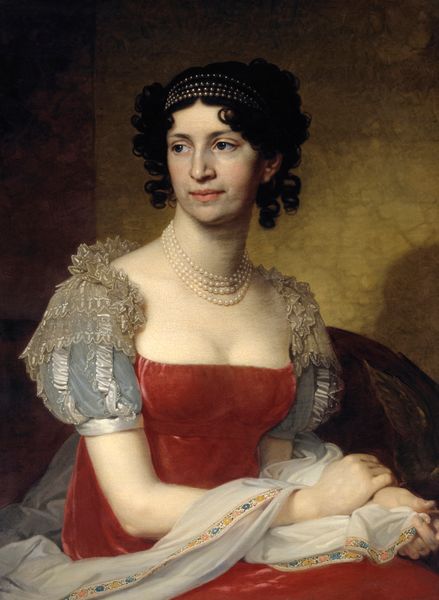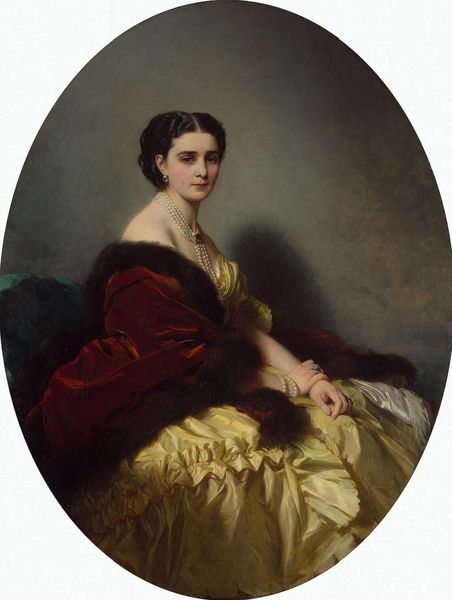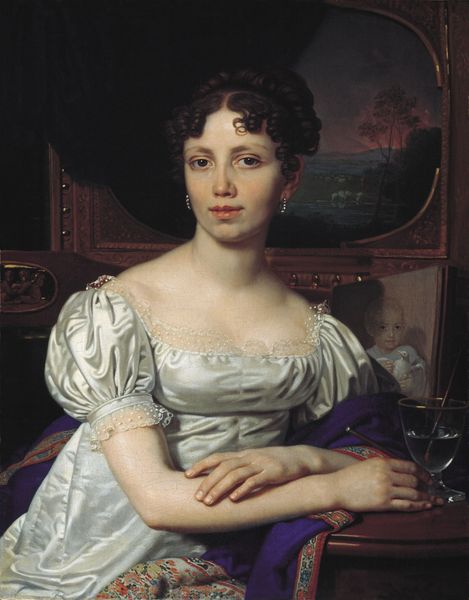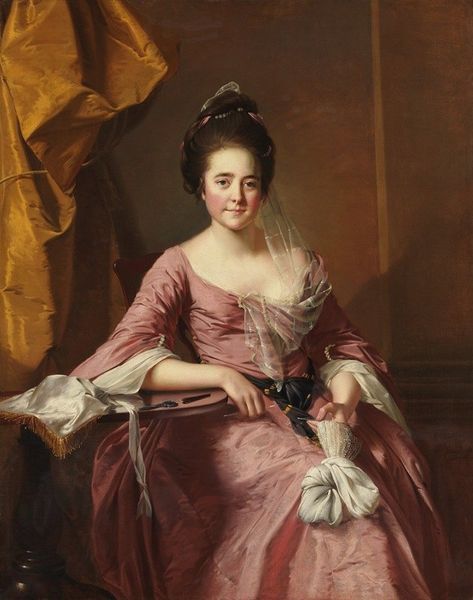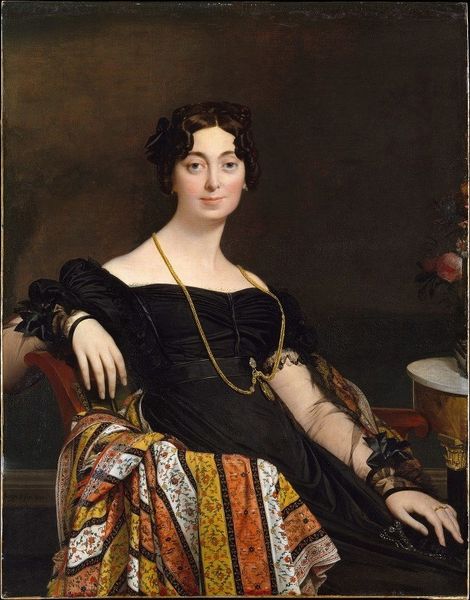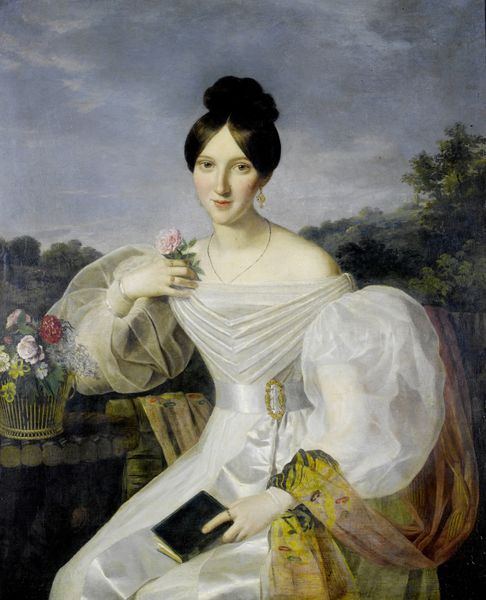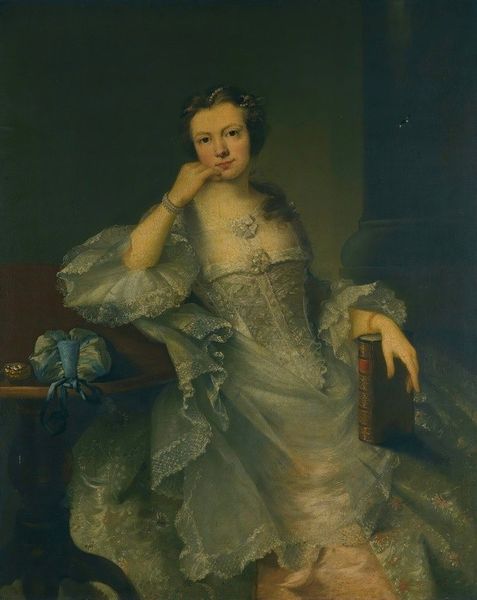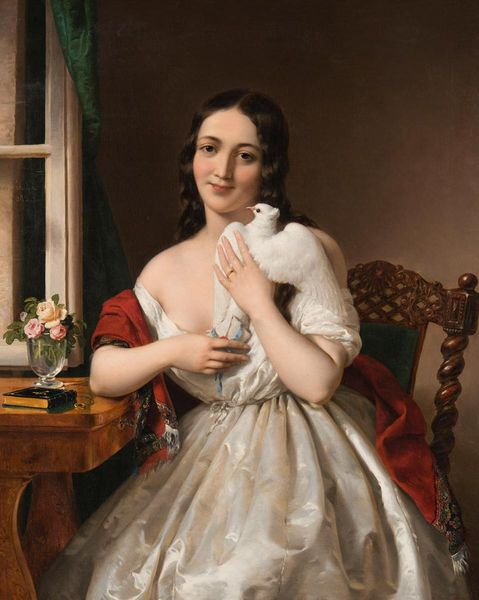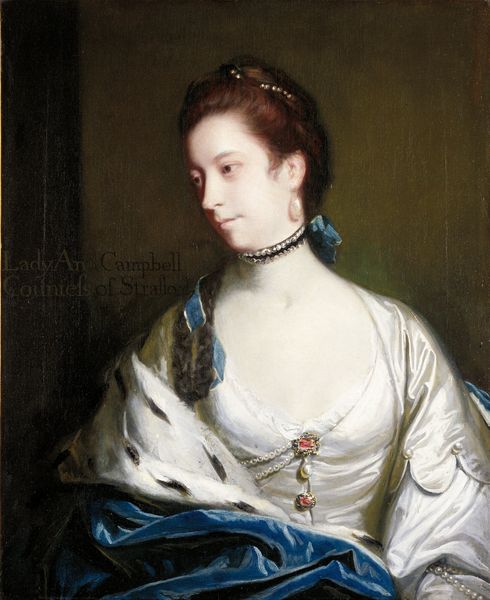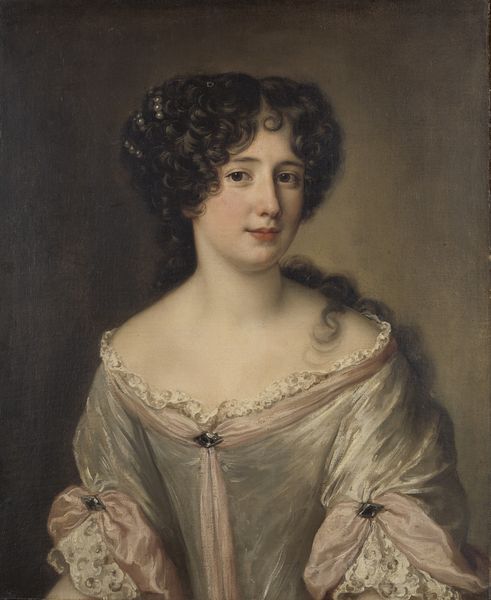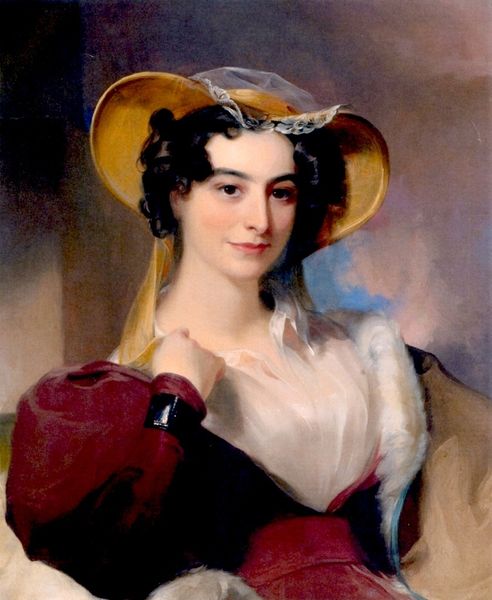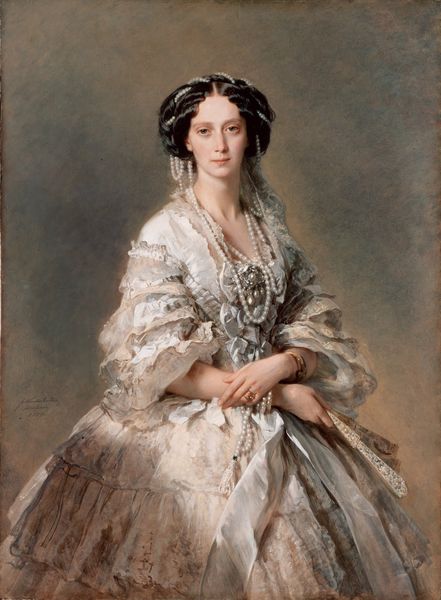
painting, oil-paint
#
portrait
#
neoclacissism
#
painting
#
oil-paint
#
romanticism
#
academic-art
Dimensions: 141.9 x 101 cm
Copyright: Public domain
Curator: Let’s turn our attention to Jean-Auguste-Dominique Ingres' portrait of "Baroness Betty de Rothschild," painted in 1848. It currently resides in a private collection. What are your first impressions? Editor: I’m struck by the sheer volume of the dress! It’s like a pink confection, those little bows scattered across the fabric seem to fight with the sitter's seemingly calm and almost cold disposition. The material wealth is almost a distraction, overshadowing the subject's inner world. Curator: Indeed, and that's fascinating because Ingres was working within very specific socio-political parameters. Consider the Rothschild family’s immense power in 19th-century Europe. The portrait operates as both a representation of individual character and a declaration of dynastic wealth and influence within a historical and societal framework of emerging capitalism. The image conveys an image of respectability for the Rothschild’s who were new to aristocracy. Editor: It’s definitely an image crafted to communicate power. Her hand gestures are so specific: raised, poised, almost commanding, adorned with jewelry. How do we read those symbols within the context of feminist theory, particularly considering the limited roles afforded to women of that era? Curator: It presents a conundrum. While her wealth and status grant her certain privileges, she's simultaneously constrained by the societal expectations of her gender. This is Ingres painting within a system – patronage, display, societal mores that all affected artistic production at the time. The painting hangs, so to speak, in the balance. The way women were painted became increasingly contentious because they were never realistically captured by the painting. She looks to me a sculpture painted on. Editor: Exactly, this almost statuesque representation almost contributes to objectification, making it more difficult to look for signs of genuine human experience, no matter how carefully the subject has been framed within social parameters. Perhaps the beauty lies precisely in acknowledging the impossibility of disentangling her personhood from the complexities of her position. What you call "society", and its demands, becomes written onto her flesh through this portrait, marking a certain degree of tragedy. Curator: Yes, the portrait then becomes not just a likeness but a document, speaking volumes about the complex negotiations of identity, class, and gender in a transformative historical moment. Thanks for your illuminating perspective. Editor: And thank you; understanding it that way, within the ebb and flow of larger power struggles, breathes a life into this painting that purely aesthetic readings often miss.
Comments
No comments
Be the first to comment and join the conversation on the ultimate creative platform.
